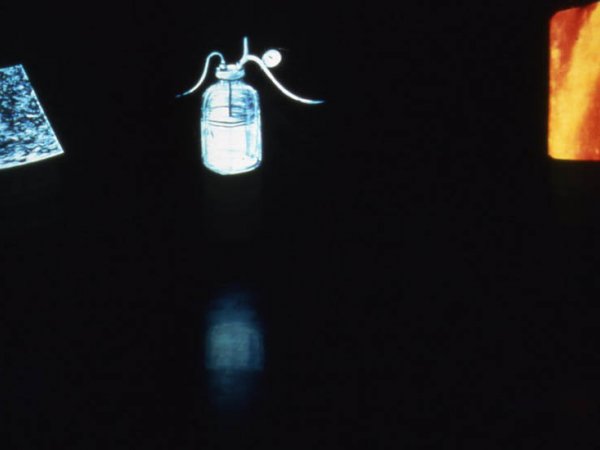William Kentridge
This exhibition on Willian Kentridge (Johannesburg, 1955) presented a selection of works produced by the artist in the ten preceding years.
Kentridge has alternated the practice of drawing and engraving with forays into the world of film and theatre, where he has worked as an actor, scriptwriter and director.
Kentridge’s work is a personal and eloquent attempt to tackle the nature of human emotions and memory, as well as the relationship between desire, ethics and responsibility. His works deal with ill treatment and suffering, guilt and confession, and domination and emancipation in the postcolonial context of the late twentieth century. Although it brings up issues that touch on the human condition in general, his work is rooted in his native land, South Africa, a country shaped by a history of racial divisions and apartheid laws. Nevertheless, his works do not directly “illustrate” apartheid, but convey his message through metaphor.
The core of the exhibition consisted of a series of animation films that Kentridge produces using a technique that consists of making charcoal and pastel drawings that he then modifies by erasing, adding to and reworking different elements. Each stage of the process is filmed for a few seconds with a 16 mm camera. Kentridge thus visualises the passing of time and the stratification of memory, making the production process visible over the drawings.
This exhibition constituted a very complete exploration of the work this South African artist (Johannesburg, 1955) had been developing over the previous ten years. Kentridge alternates between drawing and print-making with incursions into the world of theatre. The art of William Kentridge is a personal expressive attempt to engage with the nature of memory and the human emotions, and the relationship between desire, ethics and responsibility. His works deal with ill-treatment and suffering, guilt and confession, domination and emancipation in the context of the post-colonial world of the end of the 20th century. Even as it evokes issues which characterize the human condition in general, Kentridge`s art is particularly rooted in his place of origin, a nation marked by racial divisions and the laws of apartheid. Nevertheless, his works do not simply "illustrate" apartheid; instead, they put across their message by way of metaphor.
The basis of this exhibition —William Kentridge’s first in Spain— is his application of the drawing to the cinema and the theatre. He creates animated films out of drawings on paper; a technique of erasing different fragments of the image is used to alter the whole. Kentridge photographs the state of the image at its various moments of evolution and the end result is a series of hundreds of photographs which go to make up the film.
This exposition presents various series of drawings, in great murals, and shows the end results of their application to the cinema and theatre in the form of film shows. The exhibition brings together the work of William Kentridge from his first films (the two series, Johannesburg and 2nd Greatest City after Paris, 1989) to the most recent, WEIGHING… and WANTING (1998). At the MACBA these works are complemented by a new installation, Il ritorno d’Ullise (1998), in a European première.
William Kentridge was born in Johannesburg in 1955. Since 1979 he has held many one-man and group shows in Great Britain, Norway, France, Germany, Italy, Portugal, Turkey and Australia, and been present at the Biennial Shows in Sydney, Istanbul, Havana and Johannesburg, as well as at the "Inklusion/Exklusion" exhibition (Graz, 1996) and Documenta X in Kassel (1997). He has taken part in many joint projects with other artists, writers, musicians and film-makers.
Exhibition produced by the Palais des Beaux-Arts, Brussels, with the collaboration of the MACBA
Curators: Carolyn Christov-Bakargiev and Piet Coessens

















